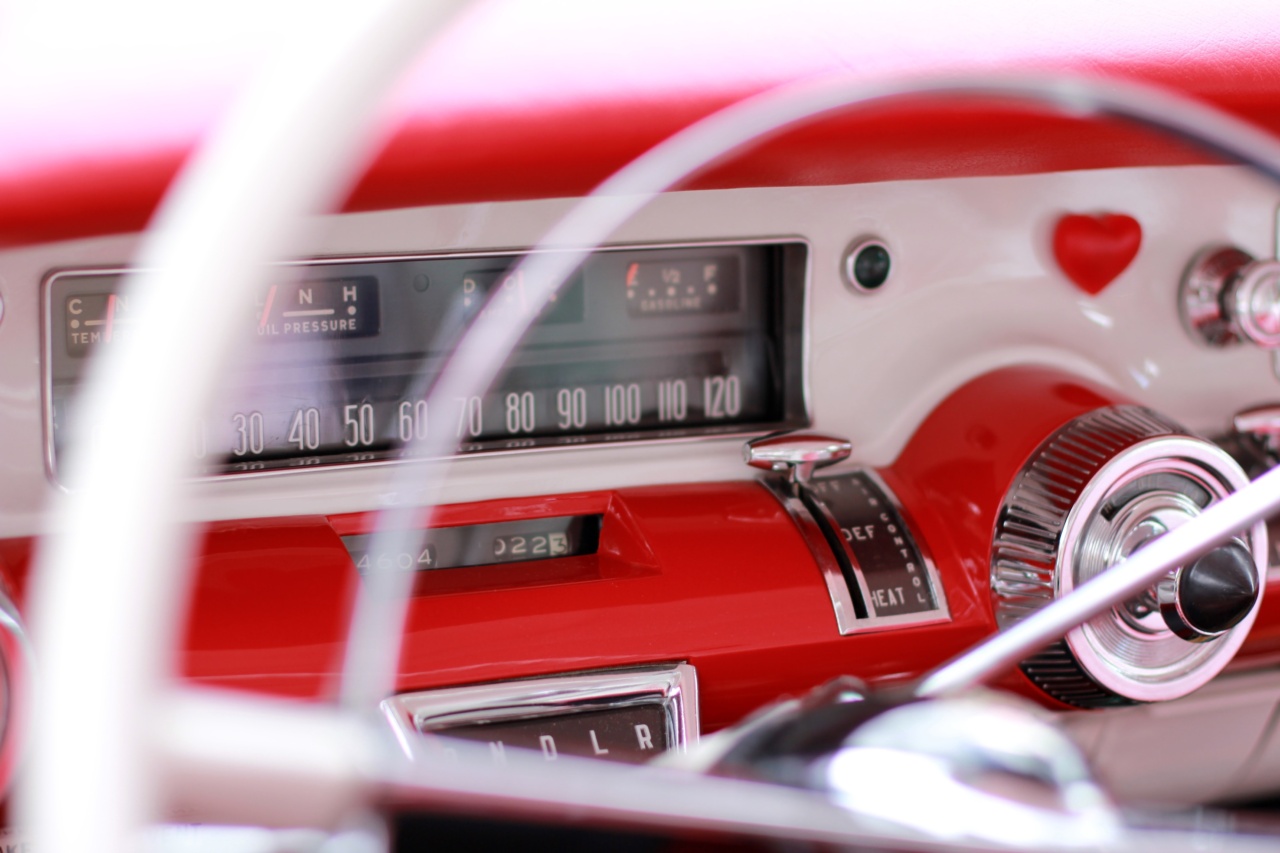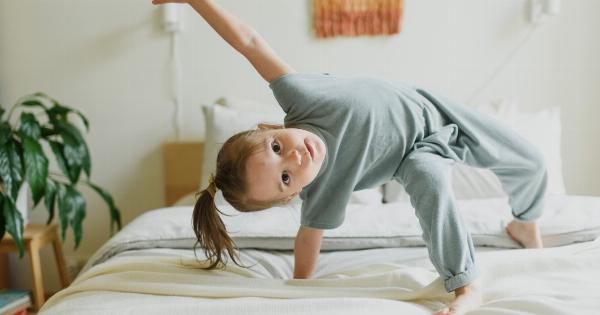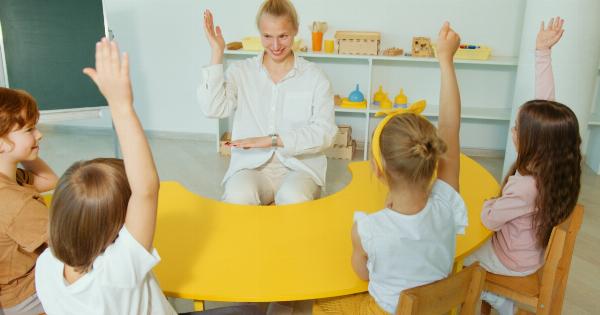Gross motor development refers to the development of large muscle groups and the ability to perform coordinated movements.
It plays a vital role in a child’s overall development and affects their ability to engage in physical activities, sports, and daily tasks. Understanding the typical milestones children reach at different ages can help parents and caregivers identify any possible delays and provide appropriate support and stimulation.
Let’s take a closer look at the gross motor development of children from infancy to adolescence.
Infancy (0-12 months)
During the first year of life, infants develop significant gross motor skills. Initially, they are limited to mostly involuntary movements, such as reflexes.
However, as they grow, they gain control over their body and start showing intentional movements.
Key milestones during infancy include:.
1. Lifting the Head
At around 2 to 4 months, infants can lift their heads while lying on their stomachs. This milestone demonstrates increased neck strength and control.
2. Rolling Over
Between 4 and 6 months, most babies can roll from their back to their stomach and vice versa. This milestone signifies improved core strength and coordination.
3. Sitting Independently
Around 6 to 9 months, infants start sitting independently without support. They can maintain a stable sitting position and engage in play while sitting.
4. Crawling and Creeping
From 6 to 10 months, babies typically begin to crawl on their hands and knees or creep by dragging themselves with their arms while lying on their stomachs. These movements help strengthen their upper body and improve coordination.
Toddlerhood (1-3 years)
During toddlerhood, children continue to refine their gross motor skills and gain more control over their movements. They become more adventurous, exploring their surroundings and challenging their physical abilities.
Important milestones during toddlerhood include:.
1. Walking
Between 9 and 15 months, toddlers start taking their first steps independently. Initially, they may be unsteady, but with practice, they become more confident and improve their balance.
2. Climbing and Descending Stairs
Around 18 to 24 months, children can climb stairs using both feet and hold onto the railing for support. By 28 to 36 months, they can go up and down stairs alternating feet, one step at a time.
3. Running
Between 2 and 3 years, children begin to run. Initially, their running pattern may look a bit awkward, but it becomes smoother with practice. Running helps improve coordination, balance, and agility.
4. Kicking and Throwing
Children between 2 and 3 years start developing basic ball skills, such as kicking a ball forward and throwing it with some accuracy. These activities enhance their hand-eye coordination and motor planning.
Early Childhood (4-6 years)
In early childhood, children continue to refine their gross motor skills and become more physically active. They develop better control over their movements and can engage in complex activities that involve coordination and balance.
Key milestones during early childhood include:.
1. Jumping and Hopping
Between 4 and 5 years, children can jump forward and hop on one foot. By 6 years, they can hop forward, backward, and sideways with ease. These activities improve their balance, coordination, and leg strength.
2. Pedaling a Tricycle
Around 4 to 5 years, children can pedal a tricycle using their feet, which requires reciprocal movement and coordination between their legs. This skill improves their lower body strength and balance.
3. Climbing Structures
From 4 to 6 years, children become more confident climbers. They can climb ladders, trees, and various playground structures, which enhances their upper body strength, coordination, and spatial awareness.
4. Skipping
Between 5 and 6 years, children often learn to skip. Skipping involves coordination between jumping, balancing on one foot, and swinging the other leg forward. It enhances their overall coordination and rhythm.
Middle Childhood (7-10 years)
In middle childhood, children continue to develop their gross motor skills further. They become more competent in performing complex movements and are capable of participating in structured sports and physical activities.
Important milestones during middle childhood include:.
1. Jumping Rope
Around 7 to 8 years, children start to master the skill of jumping rope. This activity requires coordination, balance, and timing, which contributes to the development of their gross motor skills.
2. Riding a Bicycle
Between 7 and 9 years, children typically learn to ride a two-wheeled bicycle without training wheels. Riding a bicycle involves maintaining balance, coordinating leg movements, and steering.
It promotes cardiovascular fitness and overall motor coordination.
3. Participating in Team Sports
From 8 to 10 years, children often engage in team sports such as soccer, basketball, or baseball. Participation in team sports improves their overall motor skills, agility, coordination, and social interaction.
4. Performing Complex Dance Moves
In middle childhood, children may also develop an interest in dance. They can learn and perform more complex dance moves that require coordination, balance, flexibility, and rhythm.
Adolescence (11+ years)
During adolescence, gross motor development continues to progress, but at a slower rate compared to previous stages. However, adolescents experience significant growth spurts that may temporarily affect their coordination and balance.
Key milestones during adolescence include:.
1. Developing Strength and Endurance
During adolescence, individuals experience an increase in muscle strength and endurance. Regular engagement in physical activities, such as weightlifting, swimming, or jogging, further enhances these abilities.
2. Mastering Sports Skills
Adolescents who continue to participate in sports may refine their skills and become more proficient. They demonstrate improved coordination, agility, and strategy in their chosen sports.
3. Enhancing Balance and Stability
As the bones and muscles continue to mature, adolescents develop better balance and stability. This allows them to engage in activities that require precise movements and better control, such as gymnastics or martial arts.
4. Fine-tuning Fine Motor Skills
In addition to gross motor skills, adolescents also refine their fine motor skills. These skills involve more precise movements, such as writing, drawing, or playing musical instruments.
Understanding the typical milestones of gross motor development at each stage is essential for parents, caregivers, and educators.
Recognizing the signs of delayed or advanced development can help determine if intervention or additional support is necessary. Encouraging and providing opportunities for physical activity throughout childhood and adolescence contribute to healthy growth and development, allowing children to reach their full potential.



























